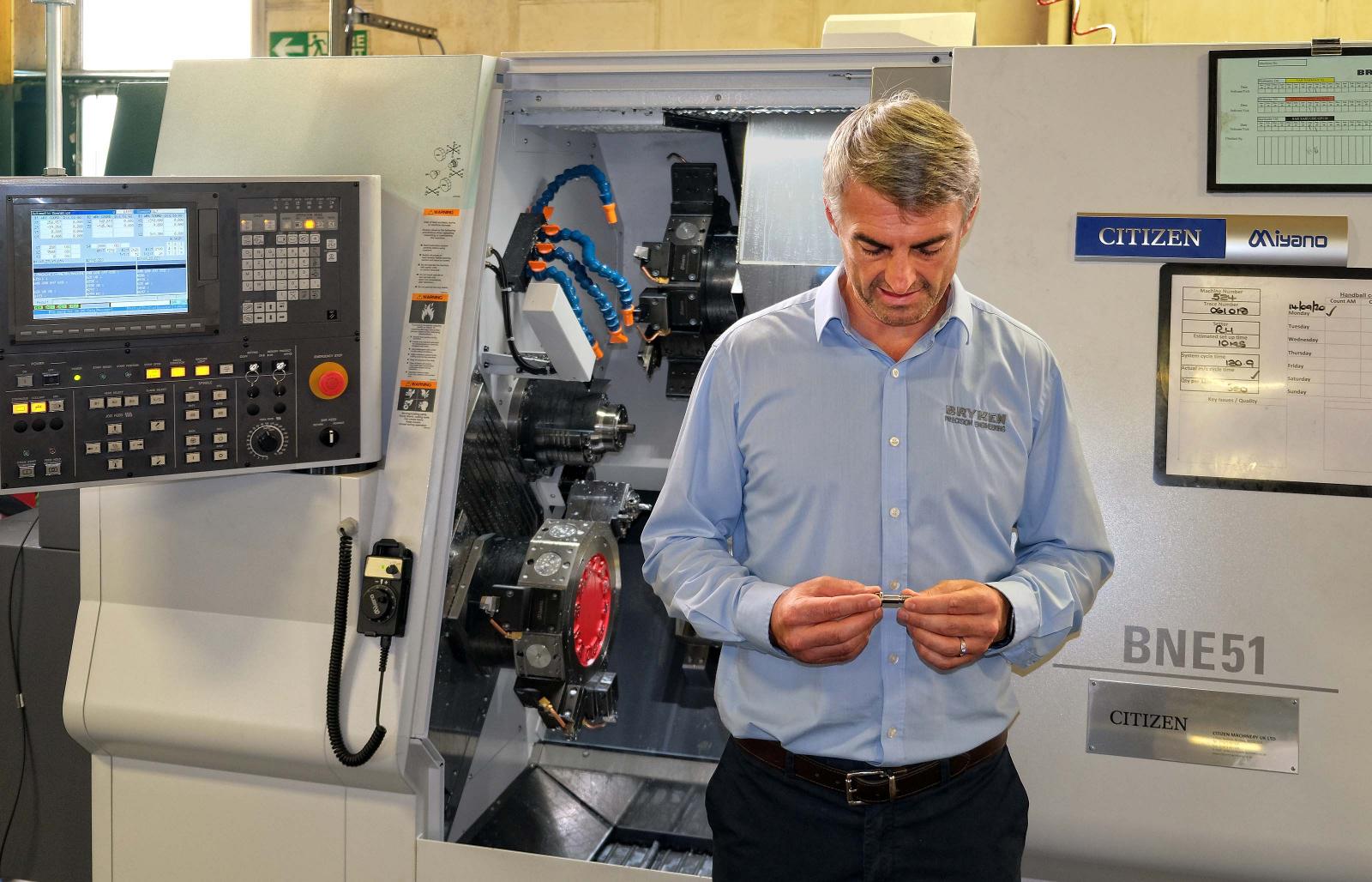
Turn-milling centres are speeding production by 40% and helping Bryken meet increased demand and stay competitive on high added value parts.
In August 2020 the Merseyside subcontractor took delivery of its sixth Miyano BNE-51MSY turn-mill centre, having bought its first as recently as June 2018. Operations director Phillip Taylor says that regular investment in new plant is key to thriving in a competitive global marketplace and he makes sure that no machine tool stays on the shop floor for more than 10 years. The company, which has 95 employees and a £10 million annual turnover, derives 40% of its business from the oil and gas industry and is also a major supplier to the high-voltage power sector, amongst others.
Mr Taylor, son of one of the company founders, runs the subcontracting business together with his brother Stewart and sister Natalie Lund. He explained, "Ninety percent of our turnover comes from producing precision turned parts, many of which require a lot of prismatic machining as well, so choice of turn-mill centre is crucial to our success.
"We started to upgrade our fixed-head lathes by replacing them with Miyanos in 2018 in response to an upturn in demand, which gathered pace at the beginning of this year when we bought three more BNE-51MSYs in the space of two months. The 51 mm bar capacity, twin-spindle turning centre with its two 12-station live turrets, the upper one with a Y-axis, is ideal for our needs.
"It is highly efficient at balanced machining of complex routines at both spindles, so we can take chunks out of cycle times, which are between 20 and 40% faster than on previous lathes. It meets the increasing demand for the supply of high added value parts at competitive prices."
The lathes hold 20 microns total tolerance easily on machined dimensions.
One reason for the lathe's speed is Citizen's superimposition control technology, which allows the sub spindle to track the upper turret for cutting reverse-end features while the same turret is performing front-end operations on bar at the main spindle. If the lower turret is operational at the same time, three tools are in cut simultaneously, delivering the performance of a triple-turret lathe for a significantly lower capital outlay.
Another benefit that Bryken operators appreciate is their ability with the Mitsubishi control to use the handwheel to run through an entire machining cycle to verify the program and detect any potential clashes.
Over the years, market forces have dictated a move at Bryken towards more fixed-head turning for the production of larger diameter, complex components, the simpler work having largely disappeared overseas. Nevertheless, nearly one-third of the lathes on-site are still of the sliding-head variety. The four Citizen Cincom models are the most recently installed, three M32-VIII lathes and an L20-XIILFV.
Mr Taylor concluded, "We source a lot of lathes from Citizen because they have a wide range of machines that use advanced technology. We also receive good support from them, especially the applications engineering and training they provide. They and their equipment have made a big improvement to our operational efficiency."